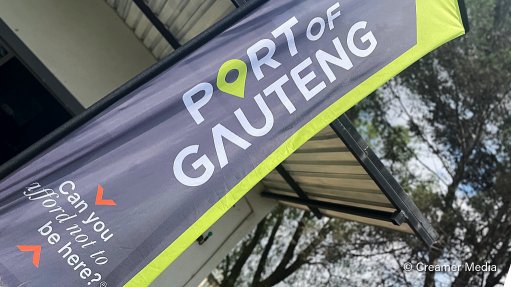Health and Welfare Seta makes ‘Decade of the Artisan’ contribution


Nompumelelo Magagula The supervisors here are extremely helpful and that gives me increased confidence
In an innovative contribution to the strategic national imperative of increasing the number of qualified artisans in South Africa, the Health and Welfare Sector Education and Training Authority (HWSeta) has ventured into new territory by embarking on a project to train 100 artisans for the first time.
Training is currently taking place for personnel in seven key trades over the three-year pilot project – air conditioning and refrigeration mechanics; boilermakers; electricians; fitters and turners; instrument mechanicians; tool, jig and die-makers and welders.
Participants on the project are all unemployed South Africans from disadvantaged backgrounds from Gauteng, KwaZulu-Natal and the Western Cape.
All of them have previously studied at public technical and vocational education and training colleges (TVETCs), which were formerly known as Further Education and Training Colleges, or FETCs. They hold either an N4 theory qualification in a specific trade or alternatively a National Certificate (Vocational) NC(V) Level 4 in one of the two engineering disciplines.
The project is based on the model of the flagship accelerated artisan training project developed and successfully implemented by the Manufacturing, Engineering and Related Services SETA (merSeta.)
Artisan training generally takes place across 17 of the 21 Setas in South Africa, but the major Setas in terms of current intake numbers are merSeta, the Mining Qualifications Authority and the Chemical Industries Education and Training Authority.
As a newcomer to artisan training, the HWSeta has entered into partnership with the Swiss-South African Cooperation Initiative (SSACI), which acts as the project management agency and lead employer. The SSACI is responsible for overall management of the project, which includes apprentice recruitment, contractual arrangements for the apprentices and placement with training centres for the initial 24-week institutional training period, followed by placement with host employers for the 60-week on-the-job training period. Monitoring of apprentice progress, as well as the arrangements for trade testing at the end of the training period, is a critical aspect of the project.
The SSACI has extensive experience gained since 2008 in managing training projects for unemployed young people in critical and scarce engineering trades.
“We are delighted to be involved with this new project,” says SSACI CEO Ken Duncan. “It will not only make a contribution to national artisan targets in South Africa but also open up for the first time the training capacity of companies and workplaces in the health and welfare sector and stimulate them to embark on further artisan training in the future.”
The timing of the project is viewed as particularly opportune since it is taking place in the context of an extensive restructuring and streamlining of the artisan training system in terms of the newly developed national regulations governing the implementation of workplace-based learning programmes for artisan development as well as the recent introduction of a new, uniform funding model for artisan training.
Training Testimonial
One of the project participants is apprentice electrician Nompumelelo Magagula. One of six children, she hails from Mpumalanga and is currently undergoing on-the-job training at Montecasino.
Magagula is outspoken in her enjoyment of the training programme. “If you work in a field that you love as I do, every day is a new challenge,” she says. “The supervisors here are extremely helpful and that gives me increased confidence. Once I pass my trade test and qualify as an artisan, I hope to find permanent employment in Mpumalanga so that I can be near my family and support network of friends.”
The success of a collaborative project of this nature is of course dependent on the energy and commitment of all the parties involved – the HWSeta responsible for the oversight and funding of the project and allocating personnel to be trained by the National Artisan Moderation Body (NAMB) in the approval of workplaces as artisan training sites; the SSACI as the managing agency; the NAMB; and, critically, the host employers in the health and welfare sector or the manufacturing sector.
Host employers employ the apprentices for the 60-week period of workplace-based practical training and assign them to work that develops the required skills for the specific trade. They also supervise their work and sign off their logbooks once the required levels of competence have been acquired.
Once the apprentices have completed their training and passed a trade test to qualify as artisans, the SSACI will continue to support the candidates to find employment by assisting them with the preparation of CVs, identifying potential employers and arranging the necessary interviews.
The HWSeta recently approved an extension of the collaborative project to provide for the training of a further 100 young people over the period September 2014 to December 2016.
HWSeta CEO Yvonne Mbane is forthright in her commitment to the project and enthusiastic about progress to date. “The HWSeta’s partnership with the SSACI is in line with the Minister’s call to “turn every workplace into a training space” and also the call to all Setas to make a contribution to increasing the number of qualified artisans that we need to spur economic growth in our country,” says Mbane.
“We will try to place trainee artisans, where possible, with employers in the health and social development sectors that pay their skills development levies to the HWSeta so that these sectors are able to reap a return on their investment,” she adds.
This innovative training programme is certainly one to be watched as it continues to roll out, to the benefit of the young people participating in the project as well as the wider economy.
Comments
Announcements
What's On
Subscribe to improve your user experience...
Option 1 (equivalent of R125 a month):
Receive a weekly copy of Creamer Media's Engineering News & Mining Weekly magazine
(print copy for those in South Africa and e-magazine for those outside of South Africa)
Receive daily email newsletters
Access to full search results
Access archive of magazine back copies
Access to Projects in Progress
Access to ONE Research Report of your choice in PDF format
Option 2 (equivalent of R375 a month):
All benefits from Option 1
PLUS
Access to Creamer Media's Research Channel Africa for ALL Research Reports, in PDF format, on various industrial and mining sectors
including Electricity; Water; Energy Transition; Hydrogen; Roads, Rail and Ports; Coal; Gold; Platinum; Battery Metals; etc.
Already a subscriber?
Forgotten your password?
Receive weekly copy of Creamer Media's Engineering News & Mining Weekly magazine (print copy for those in South Africa and e-magazine for those outside of South Africa)
➕
Recieve daily email newsletters
➕
Access to full search results
➕
Access archive of magazine back copies
➕
Access to Projects in Progress
➕
Access to ONE Research Report of your choice in PDF format
RESEARCH CHANNEL AFRICA
R4500 (equivalent of R375 a month)
SUBSCRIBEAll benefits from Option 1
➕
Access to Creamer Media's Research Channel Africa for ALL Research Reports on various industrial and mining sectors, in PDF format, including on:
Electricity
➕
Water
➕
Energy Transition
➕
Hydrogen
➕
Roads, Rail and Ports
➕
Coal
➕
Gold
➕
Platinum
➕
Battery Metals
➕
etc.
Receive all benefits from Option 1 or Option 2 delivered to numerous people at your company
➕
Multiple User names and Passwords for simultaneous log-ins
➕
Intranet integration access to all in your organisation

















